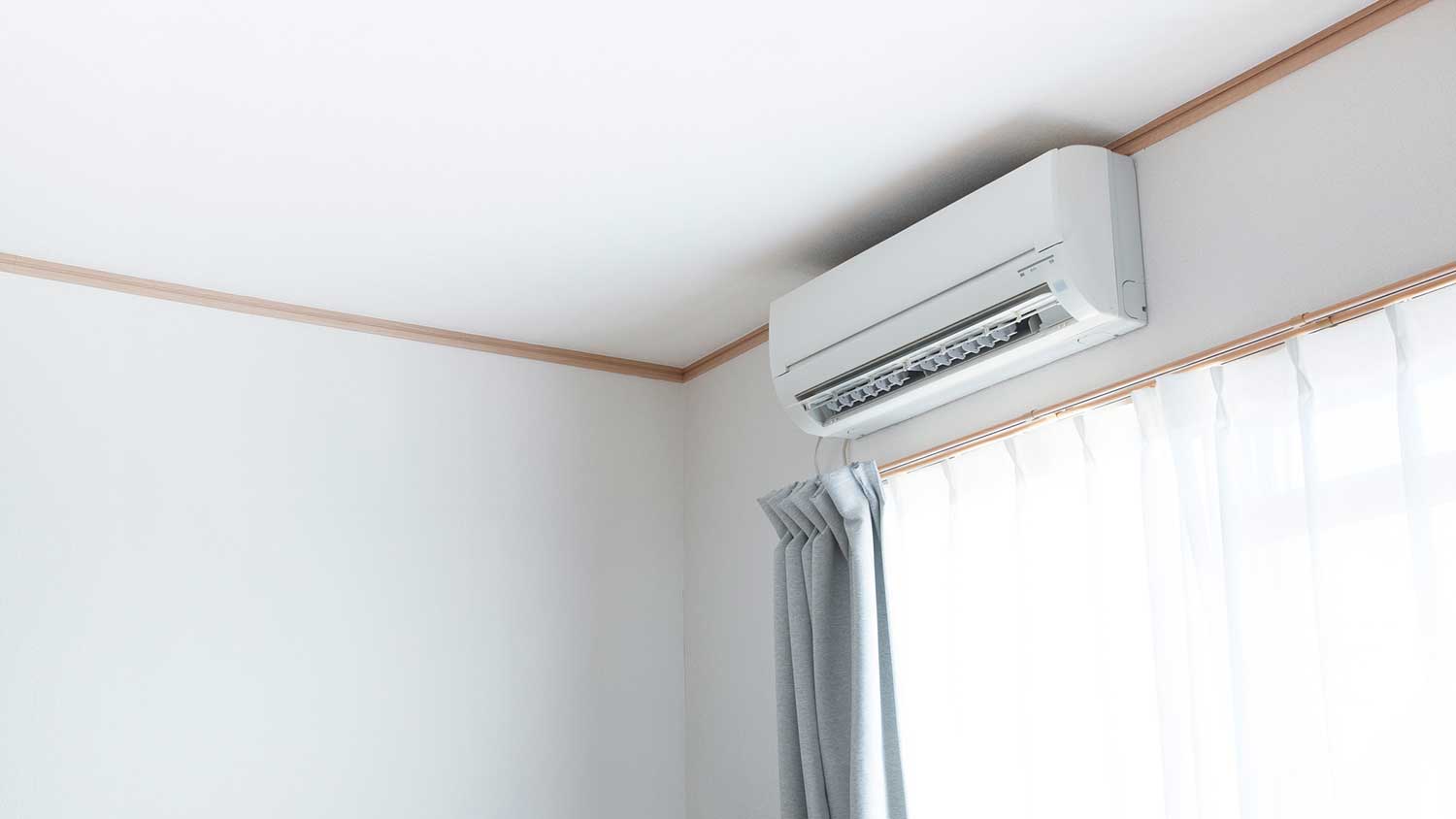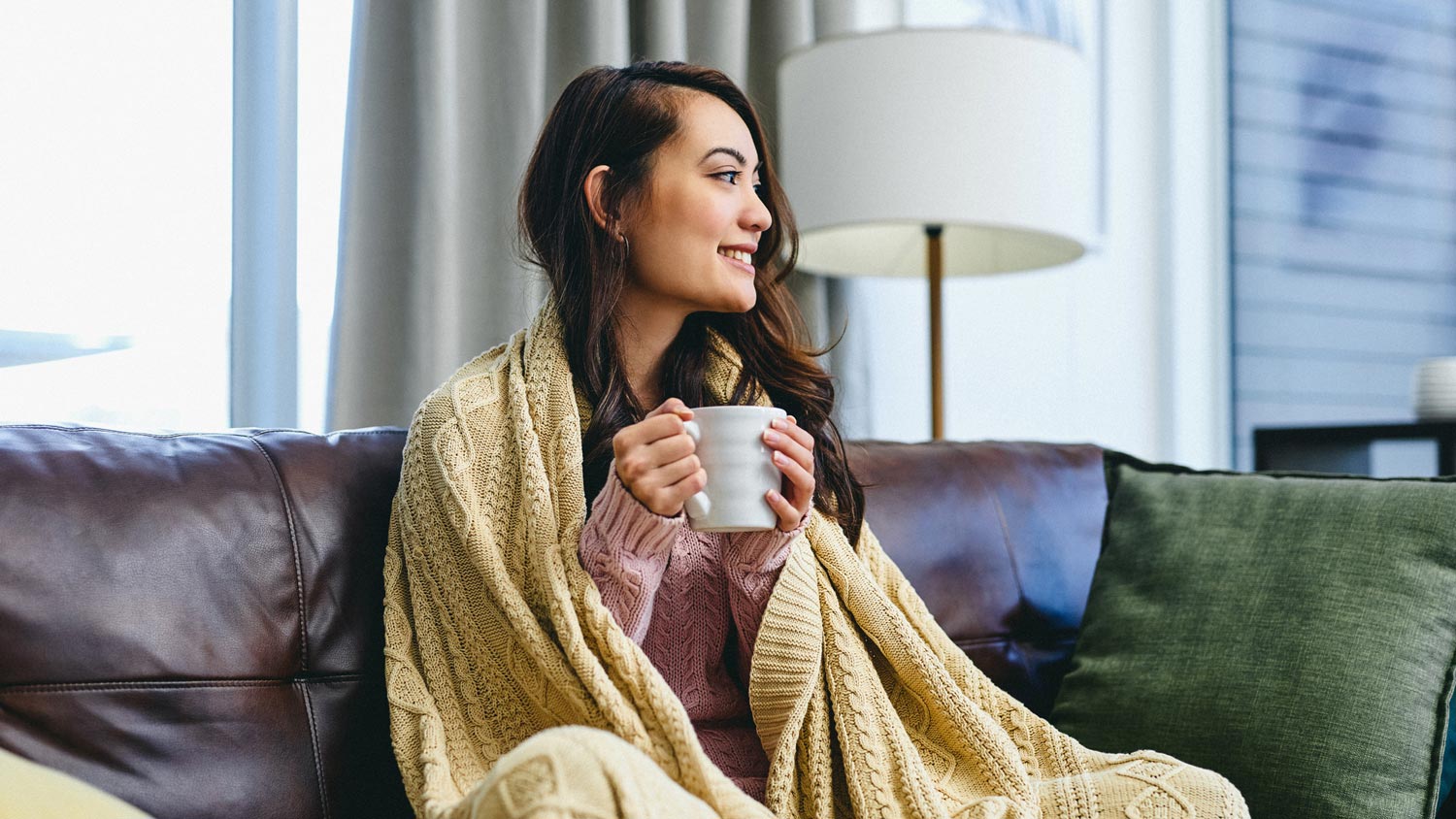Mini Split AC vs. Central Air: What’s the Difference?
No matter which you choose, it’s cool either way


Mini split ACs don’t need ductwork, making them easier to install.
A single central air unit can heat or cool an entire home and is best for extreme climates.
Mini split ACs are more energy efficient and allow you to control the temperature of individual rooms, or zones.
The size and age of your home can help determine the best AC option.
If you’re wondering whether to purchase a mini split AC versus central AC for your home, don’t worry, you’re in the right place. Central air is often touted as the more convenient way of cooling off an entire home, but it’s not always an option for owners of older homes without internal air ducts.
Enter the mini split AC (or ductless AC), which allows for effective cooling without the cost and hassle of installing ductwork. Learn which side of the mini split AC versus central air debate is the right HVAC option for your home.
Mini Split AC vs. Central Air: Key Differences
| Mini Split AC | Central AC |
|---|---|
| Less ongoing operation costs | Lower upfront installation cost |
| Simpler installation | Complex installation |
| Better for mild climates | Better for extreme climates |
| Best for temperature “zones” by room | Best for regulating the temperature of an entire home |
| Better energy efficiency | Includes filtration of debris and allergens |
A mini split AC (often called a ductless mini split) operates internal ductwork. This AC option is installed in the wall of a home, similar to a single-unit air conditioner, and you can adjust the temperature via remote at each device.
On the other hand, central air has extensive ductwork installed in a home's walls, ceilings, and crawl spaces. These ducts connect to various vents throughout the home, where they blow cool air from the AC unit or hot air from the furnace or heat pump into individual rooms or heating/cooling zones, depending on the season. The temperature of the central air can be regulated at a main thermostat or remotely by a phone or tablet if it’s a smart thermostat.
Differences in How Mini Split and Central AC Systems Work
Let’s clear up a common question about the technology behind these two kinds of cooling systems. Both use a refrigerant that absorbs heat from the inside air and cools it over an evaporator coil. The cool air is then released into the house. Both require an indoor and outdoor component to make this work.
Here, the two designs run into several important differences. As we mentioned, a mini split AC doesn’t have ductwork, so it can only blow the cooled air back into the room it’s installed in. That means you’ll have a unit for each room (similar to a window AC unit), but several of these units can connect to a single condenser. With central air, you’ll have just one indoor unit (either in the basement or utility room) plus an outdoor condensing unit.
What Is a Mini Split AC? Pros and Cons

A mini split AC consists of an indoor and outdoor unit. Mini split ACs work by refrigerant flowing from one to the other, absorbing heat from inside your home and releasing it outside.
| Pros | Cons |
|---|---|
| No ductwork necessary | Expensive to install |
| Easy to adjust the temperature | Large, bulky aesthetic |
| Saves energy and money | Does not provide air filtration |
Best for: Owners of older homes or houses without existing ductwork
Pros of Mini Split AC

Consider these advantages of installing a mini split AC system.
No ductwork is necessary: Owners of older homes, rejoice! You don’t have to sweat through summers or tear apart your walls to install mini split ACs. Just hire your local mini split installer to add a unit within hours.
Easily adjust the temperature: Mini split AC units are controlled via remote control so you can adjust the coolness of a room at the touch of a button.
Saves energy and utility costs: You’ll only need to turn on the ductless AC unit when you want to cool a certain room, so running your mini split AC will use less energy and cost less.
Ideal for room additions: Mini split AC units are an ideal cooling solution if you have a new room addition or create a separate space in your home for someone to live independently. The split unit can cool down the smaller finished area while a central AC system works for the rest of the house.
No ductwork maintenance: Ductwork is expensive to install initially and requires a certain level of maintenance, including monitoring it for mildew growth and dust buildup over the years.
Works with a variety of home designs: Sometimes ductwork isn’t possible for certain house designs or historical housing, so mini split units are a useful alternative when you can’t physically change the layout. They also help in houses with multiple stories where a central AC might struggle to cool down the upper floors.
Cons of Mini Split AC
Consider these disadvantages of installing a mini split AC.
Expensive to install: Depending on the size of your space, you’ll likely have to purchase multiple ductless units to cool it off, which can be more expensive than installing a central air unit (though only when ductwork is already present). Mini split installation costs range from $2,000 to $14,500.
Detracts from your overall aesthetic: Mini split ACs can end up looking quite large and obtrusive on interior walls. Some homeowners may not want to disrupt the aesthetic of a room with a major AC unit.
Doesn’t provide effective air filtration: While mini splits have air filters, they’re not nearly as effective in removing airborne particles for improved air quality.
Complicated maintenance: While you don’t have ductwork to worry about, you will need maintenance for each unit. Replacing air filters or checking refrigerant can take extra time.
Needs extra space: If you choose a wall-mounted unit, you’ll be taking up valuable space on that wall that you could have otherwise used. You’ll also need plenty of room on the outside for a condenser unit.
Is a Mini Split Worth It?
While it’s true that mini splits have a few drawbacks, such as expensive installation, less effective air filtration, and unsightly appearance, the potential benefits may outweigh the negatives, making this type of AC system worthwhile. You may opt for a mini split system if you’re looking for easy installation, greater energy efficiency, lower energy bills, and better air quality.
What Is Central Air? Pros and Cons

Central air operates from a central indoor unit consisting of an AC unit and a furnace or heat pump to regulate the home temperature. While vents are in each of the heating/cooling zones, it only takes one thermostat to control it all.
| Pros | Cons |
|---|---|
| Installation is less expensive and potentially less intrusive | Costly and complicated ductwork installation |
| Convenience in heating and cooling | Lower energy efficiency |
| Air filtration capability | Affects entire home if the main HVAC unit malfunctions |
Best for: Homeowners who want convenient heating and cooling with air filtration
Pros of Central Air
Consider the advantages of installing a central AC system.
Installation is less intrusive: If your home has existing ductwork, you’ll save time and money when you install central air. But even if you have to add the ductwork, you’ll just need a single interior unit to cool your entire home.
More convenient heating and cooling system: You’ll only need one thermostat to adjust the temperature in your home, making it easy to regulate.
Better air filtration capability: Central air not only cools or heats your home but also effectively filters out allergens and other airborne microparticles. All you need to do is clean or replace the filter regularly.
Generally lower up-front costs: As long as your home already has ductwork, installing a new central air conditioner will be significantly less expensive than switching to split mini units in most cases.
Easier maintenance: With only one indoor and one outdoor unit that need attention, central air is easier to maintain from season to season.
Better options for heating and cooling combinations: Central air is easy to combine with a furnace or other central heating option to save space and streamline your HVAC system. You can also use a heat pump with your ductwork, which takes care of heating and cooling. Split mini units don’t have these options.
Cons of Central Air
Consider the disadvantages of installing a central AC system.
Complicated and costly ductwork installation: If you live in an older home that doesn’t have existing ductwork, you’ll have to install it if you want central air. This task can add thousands of dollars to the price of your new HVAC unit.
Less energy efficient: Even the highest-efficiency central air units (up to around 26 SEER, or seasonal energy efficiency ratio) are no match to mini split ductless models, which can reach up to 42 SEER.
Entire space affected if unit breaks down: When a single mini split AC stops working, you can move into another part of the home where the AC works. With central air, the main unit cools the entire house, so if that malfunctions, it’ll feel hot and sticky everywhere. The same goes for in the wintertime: If the central air breaks down, you’ll have to buy a new furnace.
Requires careful sizing: When picking the right central AC, you need to size it for your entire house. That can be difficult, especially if you have high ceilings or lots of rooms, and it’s easy to make a mistake without expert help. Mini split units, meanwhile, only cool one room and are easy to size.
Is Central Air Worth It?
If you’re considering getting a central air system, you may wonder if the benefits are worth the cost and possibly a complicated installation process. Whether central air is worth it will ultimately depend on your needs and preferences as a homeowner. However, central air is ideal for homeowners seeking convenience, lower installation costs, and an HVAC system that won’t take up too much space.
Mini Split AC System vs. Central Air
Appearance: Central Air
Even though some options are available to conceal the mini split AC unit in the wall, central air vents are far less intrusive in your space. Plus, the main indoor unit is located in an out-of-sight spot, such as the basement.
Options and Customizations: Central Air
While ductless AC technology continues to improve, central HVAC systems have more options in terms of heating/cooling configurations. Plus, since you can’t see the central air unit, it won’t disturb the interior design of your home in the way that mini split ACs or individual radiators can.
Price: Central Air
In considering a mini split AC system versus central air, know that mini split ACs can be pricier because you are buying and installing multiple units in your home. Central air can be less expensive, but only if your home has existing ductwork. If you have to install ductwork, then you are looking at adding thousands more to the purchase price of a new HVAC system, depending on the size of your space. The cost of replacing a HVAC system is $5,000 to $12,500.
Ease of Installation: Mini Split AC
Unlike the complicated internal ductwork required for a central air system, mini split ACs only require a hole in the wall to permit the wiring and piping that connects the indoor unit to the exterior unit in each room of your home.
Ease of Repair: Mini Split AC
If your central air conks out, you’ll feel the heat everywhere in your home. Provided your individual mini split ACs don’t malfunction simultaneously, you can more easily repair or replace a single ductless unit. And you can always spend more time in the cooler parts of your home in the meantime.
Longevity: Mini Split AC
A mini split AC can last between 20 and 30 years, whereas central air might only last 15 years. However, longevity is heavily impacted by proper maintenance. Homeowners must replace filters and schedule annual HVAC inspections to ensure their HVAC system or mini split AC lasts as long as possible.
Sustainability: Mini Split AC
You’ll reduce your carbon footprint with a mini split AC, which runs more efficiently than central air. These systems use sustainable refrigerants and are composed of far less material than all that ductwork a central air unit requires.
Resale Value: Tie
Central air can offer a better return on investment (ROI) at resale because the ductwork is hidden in the walls, whereas mini split ACs are visible on the walls. However, not having to pay for either installation will be a big hit with buyers, as long as they understand the responsibility of maintaining or eventually replacing central air or ductless ACs. The ductless mini split AC versus central air debate ends in a tie for better ROI because it depends on the HVAC age and working condition.
Frequently Asked Questions
Mini split AC systems are less expensive to run than central air, meaning your monthly energy bill will be significantly lower in comparison. Since mini split systems don’t depend on a ductwork system to transfer air, cooled or heated air can reach its destination much more efficiently, which lowers your energy bill.
Yes, a mini split AC system can replace central air—and quite easily, too. Since mini splits don’t require ductwork, homeowners can convert their central air system to a mini split to save money and energy. Consult with an HVAC professional to learn more about the process of replacing your central air with a mini split.
Yes, mini split systems cool equally as well as central air. While a central system circulates air throughout the entire home at the same temperature, a mini split system allows each room to be cooled or heated at different temperatures based on your own preferences. Hire a HVAC professional to determine which type of system is best for your home.





- Furnace Repair
- Air Conditioning Repair
- HVAC Repairs
- Furnace Installation
- Wood & Pellet Stove Repair
- Dehumidifier & Humidifier Repair
- Heat Pump Companies
- Swamp Cooler Repair
- Wood Stove Services
- HVAC Companies
- Commercial A/C Repair
- Geothermal Installation
- Air Conditioning Installation
- Boiler Repair
- 24 Hour Furnace Repair
- Geothermal Repair
- Heat Pump Repair
- Humidifier Installation
- Thermostat Repair
- Thermostat Installation
- Nest Installation
- Heating & Cooling
- Heating Repair
- Furnace Cleaning
- Furnace Tune-Up
- HVAC Technicians
- Subcontractors
- Furnace Maintenance
- Plumbing & Heating Companies
- Wood Stove Inspection
- Mini Split Installation
- Wall Heater Repair
- Duct Installers
- Disadvantages of a Mini-Split System: Pros and Cons to Consider
- How Does a Mini-Split Work?
- Mini-Split vs. Window Unit: Which One Is the Best Use of Your Money?
- What Size Mini-Split Do I Need?
- What Is a Split System HVAC?
- 9 Types of Air Conditioners: Pros, Cons, and How to Choose
- How Long Does It Take to Replace an AC Unit? 5 Factors That Impact the Timeline
- 4 Reasons There’s Air Coming Out of Vents When the AC Is Off in Your House
- How to Pick the Right Window Air Conditioner Size for Your Home
- Should You Cover Your Air Conditioner in the Winter? Everything to Know










